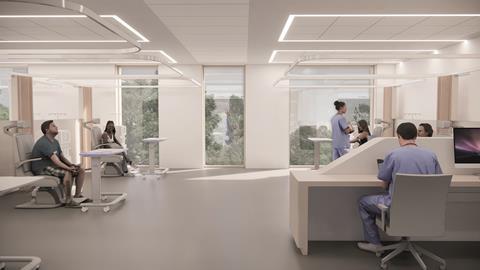- News

All the latest updates on building safety reformRegulations latest
- Focus
- Comment
- Programmes
- CPD
- Building the Future
- Jobs
- Data
- Subscribe
- Events

2024 events calendar
Explore now
Building Awards
Keep up to date
- Building Boardroom
Cost model: Evolving the design and build of community diagnostic centres

The rollout of these centres is intended to cut long elective care waiting lists, provide value for taxpayers and decarbonise the NHS, but achieving all three is a challenge

01 / Introduction
Building community diagnostic centres (CDCs) is a priority for NHS England. Right now, 13 new CDCs are being launched across the country – part of a £2.3bn plan to establish up to 160 centres by 2025. The primary goal is to reduce waiting times for NHS patients who need non‑urgent care.
People are experiencing long waits to receive planned or elective healthcare. Emergency medicine takes precedence, and in 2020 the NHS paused all elective treatment to tackle covid. Four years on, elective diagnostics, operations and treatment plans remain to be worked through.
The NHS England elective waiting list stands at around 6.4 million people. At the end of last year, 337,450 people in England had been waiting more than a year to receive care.
Historically, diagnostic care – used, for example, to identify and monitor cancers and long‑term health issues – would be the preserve of acute hospitals in larger towns or cities. Now diagnostics are increasingly moving into separate buildings, off acute sites and even into temporary locations. This is to meet the needs of ageing, less mobile populations and to also achieve a key part of the NHS Long Term Plan, which includes a goal to deliver more care outside major acute hospitals.
Read more…
This is PREMIUM content, available to subscribers only
You are not currently logged in. Subscribers may LOGIN here.
SUBSCRIBE to access this story

SUBSCRIBE for UNLIMITED access to news and premium content
A subscription will provide access to the latest industry news, expert analysis & comment from industry leaders, data and research - including our popular annual league tables. You will receive:
- Print/digital issues delivered to your door/inbox
- Unlimited access to building.co.uk including our archive
- Print/digital supplements
- Newsletters - unlimited access to the stories behind the headlines
Subscribe now
Get access to premium content subscribe today

















